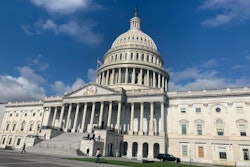The U.S. Department of Labor's Occupational Safety and Health Administration (OSHA) is moving forward with proposed revisions to standards covering exposure to beryllium, announcing that it has placed a proposal out for public inspection that is specifically intended to protect workers in shipyards and construction. The proposal protects workers by more appropriately tailoring requirements of the standards to beryllium exposure in these industries.
Beryllium is a strong, lightweight metal widely used in consumer electronics and telecommunications applications. It is also found in industrial applications and in a variety of components in the automotive and aviation industries, as well as military applications. While largely harmless in its solid form, airborne beryllium is shown to be highly toxic. According to OSHA, exposure via inhalation or skin contact with beryllium-containing dust, fume, mist or solutions can cause health effects, including beryllium sensitization, chronic beryllium disease (CBD) and lung cancer.
Under the current OSHA standards (29 CFR 1910.1024; 29 CFR 1915.1024; 29 CFR 1926.1024), employers must reduce exposures to airborne beryllium to or below the beryllium permissible exposure limits (PELs) through engineering controls to the extent feasible, supplemented by respirators where all feasible controls are not sufficient to reduce exposures to or below the PELs. In addition, personal protective clothing and equipment (PPE) (e.g. gloves, shoe covers) are required when airborne exposures can exceed the PEL or STEL or there is the potential for skin exposure. Detailed training on the health effects of beryllium are also part of the requirements.
The proposal published on October 7 ensures consistency with the general industry standard, where appropriate, based on a July 2017 final rule that clarified certain requirements regarding materials containing only trace amounts of beryllium. Proposed changes are intended to maintain safety and health protections for workers, while facilitating compliance with the standards and yielding some cost savings. According to the published report, the proposal would lead to total annualized cost savings of $2.5 million at a 3% discount rate over 10 years; at a discount rate of 7% over 10 years, the annualized cost savings would be $2.5 million.
OSHA Issues Final Rule to Lower Workplace Exposure to Beryllium
The proposed rule would revise the following paragraphs: Definitions; Methods of Compliance; Respiratory Protection; Personal Protective Clothing and Equipment; Hygiene Areas and Practices; Housekeeping; Medical Surveillance; Hazard Communication; and Recordkeeping. The proposal also sets a hearing date for December 3, 2019. OSHA will continue enforcement of the existing PELs.
Comments, materials, and other information may be submitted electronically at http://www.regulations.gov, the Federal e-Rulemaking Portal, by facsimile or mail. See the Federal Register notice for submission details.




















